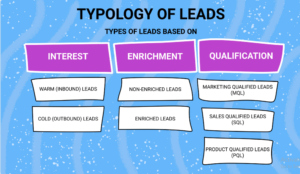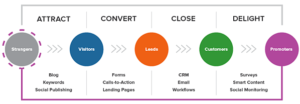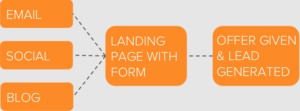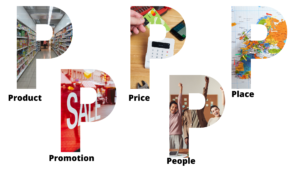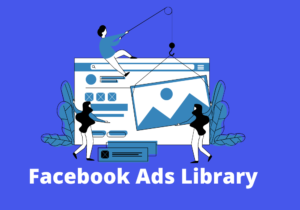What is a lead generation? What are the strategies and tips for successful lead generation? These and more the questions answered in this article, but before then; let’s get to know what leads are.
What exactly is a lead?
A lead is defined as anyone who expresses an interest in a company’s product or service in any way, shape, or form.
Leads are more likely to hear from a company or organization after initiating the contact (by submitting personal information for an offer, trial, or subscription), rather than receiving a cold call from someone who purchased their contact information.
Types Of Leads
Let’s take a look at how to categorize leads now. We’ve identified three main approaches:
Type 1 lead: based on interest
The first point that helps you define leads and divide them into two subgroups is interest:
- Warm leads, also known as inbound leads, are those who expressed an interest in you and found you on their own (for example, they came across your blog and subscribed to your newsletters).
- Cold leads, also known as outbound leads, are a subset of leads generated by you as a result of your targeting strategy and lead generation tools.
Lead type 2: Enrichment-based
The second type is determined by the data you have on your leads. You can divide them into two subgroups based on the amount of data you have:
- Leads that have not been enriched are lacking in information. They usually only have a name and an email address or a phone number (one contact method).
- Enriched leads include additional information that can be used for personalization and multi-channel marketing, such as secondary contact details, company name, location, job position, pain points, and so on.
Lead type 3: Qualification-based
This type aids in the classification of leads based on their qualification and stage in the sales funnel:
- A marketing qualified lead (MQL) is interested in you but is not yet ready to communicate with you. Assume they’ve subscribed to your blog newsletters or signed up for your lead magnet in exchange for their contact information.
- A sales-qualified lead (SQL) is someone who has expressed genuine interest in your product and is one step closer to becoming a paying customer. For example, such business leads may leave their contact information in order to contact your sales team and learn more about your product.
- A product-qualified lead (PQL) has taken the necessary steps to become a paying customer. They are similar to SQLs, but with one key difference: PQLs are typically used by companies that offer a free trial period. These leads may be using your free trial but are inquiring about features that are only available in paid plans.
Source: snov
What is a lead generation?
The process of identifying, attracting, and converting people into prospects via outbound and inbound marketing channels, as well as lead generators, is referred to as lead generation. Search, social media, email, and your website are all common lead generation channels.
What is Lead Generation in Digital Marketing?
Lead generation is the process of identifying, attracting, and converting online users into prospects for a business in digital marketing. The method employs online channels, tactics, and strategies such as email campaigns, paid social media ads, and even the provision of downloadable content via a landing page.
Source: Hubspot
Here are some of the online channels for generating leads:
- Content
Content is an excellent way to direct users to a landing page. Typically, you create content to provide free, useful information to visitors. CTAs can be placed anywhere in your content: inline, at the bottom of the post, in the hero, or even on the side panel. The more satisfied a visitor is with your content, the more likely it is that they will click your call-to-action and proceed to your landing page.
Email is a great way to reach out to people who are already familiar with your brand and product or service. Because they’ve already subscribed to your list, it’s much easier to ask them to take action. Emails can be cluttered, so use CTAs with compelling copy and an eye-catching design to capture your subscribers’ attention.
- Paid Ads and Retargeting
The sole purpose of an advertisement is to persuade people to take action. Otherwise, why would you spend the money? If you want people to convert, make sure your landing page and offer exactly match what was promised in the ad, and that the action you want users to take is crystal clear.
- Blog
The benefit of using your blog posts to promote an offer is that you can customize the entire piece to the end goal. So, if your offer is a video tutorial on how to set up Facebook advertising, you can write a blog post explaining Facebook advertising and it’s advantages… making your CTA highly relevant and easy to click.
- Social Media
From the swipe-up option on Instagram stories to Facebook bio links to bitly URLs on Twitter, social media platforms make it simple to direct your followers to take action. You can also promote your offerings on social media by including a call-to-action in your caption.
- Referral Marketing
In a different way, referral or word-of-mouth marketing can help with lead generation. That is, it exposes your brand to more people, increasing your chances of generating more leads. Whatever channel you use to generate leads, you should direct them to your landing page. The rest will take care of itself as long as you’ve created a landing page that converts.
- Product Trial
Offering trials of your product or service can help you overcome many sales barriers. Once a prospect has started using your product, you can entice them with additional offers or resources to persuade them to buy. Another good practice is to include your branding in your free versions so that you can attract additional potential customers.
This chart depicts the path from promotional marketing channels to a generated lead.
Source: Hubspot
Why is Lead Generation Important For Your Brand?
When someone expresses an interest in your brand’s products or services, the steps they take to make their first purchase appear natural. You simply assisted them in meeting a need or resolving a problem.
In contrast, when a person has no interest in what you have to offer but you still try to persuade them to buy, they may feel pressured to spend their money. This can give the customer the impression that they were coerced into purchasing your product, which can harm your brand’s reputation.
Only by addressing your target audience through lead generation can you ensure that your brand is perfectly matched with the right customers. Other advantages of lead generation include:
- Target the right customers – Businesses can focus their resources on specific markets, which saves money and increases sales (improved ROI).
- Increased brand awareness and reputation – Lead generation can help to increase brand awareness and reputation. When people become aware of your brand, you will be able to provide them with more information about product features and benefits.
- Possibility of gathering valuable prospect information – Lead generation has the potential to gather vital marketing information from prospects. Customer information such as needs, wants, and preferences can help you tailor your product or service to meet the needs of your customers. Companies, for example, can obtain this information through registration forms.
- Brand Loyalty – Businesses can create larger communities of like-minded customers, which can increase customer loyalty.
10 Types Of Lead Generation
1. Inbound phone calls: prominently display your phone number in the website’s header and footer; use a toll-free number with memorable word references (e.g. 800-Law-Easy)
2. Website Contact Information: Make contact information (phone, email, and Contact page) visible, including the website header and footer.
3. Case Studies: Case studies are a prospect magnet, so use them liberally; we recommend not gating case studies with other calls-to-action to capture MQLs.
4. Website Registration Forms: Make liberal use of website forms, balance required and optional information fields to reduce form abandonment, use email privacy statements and Captcha, and integrate with CRM systems when applicable.
5. Website Gated Content: provide valuable, educational resources such as guides, white papers, how-to-manuals, e-books, podcasts, and so on with the aforementioned registration forms in front of them.
6. Website Resources Page: Provide resources in the primary navigation, such as videos, guides, white papers, and training tools, along with the aforementioned registration forms.
7. Use Calls-To-Action (CTAs): Include multiple offers or calls-to-action on your website, emails, blogs, and other related assets. Email registrations, educational content, event registrations, and promotional offers are all examples of CTAs.
8. Chatbots or Live Chat: we strongly advise adding them to all websites, assigning staff to quickly respond to follow-up questions, or using AI answers.
9. LinkedIn Connections: connecting with relevant contacts on LinkedIn is a simple way to start a conversation; once connected, you can obtain the contact’s email address from their profile’s Contact Info.
10. LinkedIn Groups: join/create/manage a specialized LinkedIn Group to gain access to group members’ contact information; participate in Group discussions with offers and links
What Is A Lead Generation Process
Now that we’ve defined a lead generation and its various forms, let’s go over the steps of the lead generation process.
- First, a visitor learns about your company via one of your marketing channels, such as your website, blog, or social media page.
- That visitor then clicks on your call-to-action (CTA), which is an image, button, or message that encourages website visitors to take action.
- This CTA directs your visitor to a landing page, which is a web page designed to collect lead information in exchange for an offer.
Note: An offer is content or something of value that is “offered” on the landing page, such as an e-book, a course, or a template. A visitor must perceive enough value in the offer for them to provide personal information in exchange for access to it.)
- In exchange for the offer, your visitor completes a form on the landing page. (Forms are typically hosted on landing pages, but they can be embedded anywhere on your site.) Voila! You’ve got a new prospect. That is if you adhere to best practices for lead-capture forms.
How To Qualify Leads
A lead, as defined in the first section, is a person who has expressed an interest in your company’s product or service. Now, let’s talk about how someone can actually demonstrate that interest.
Essentially, a sales lead is generated by gathering information. A job seeker expressing interest in a position by completing an application, a shopper sharing contact information in exchange for a coupon, or a person filling out a form to download educational content could all result in the collection of information.
Identifying a Lead’s Level of Interest
The following are just a few of the many ways you could qualify someone as a lead. Each of these examples demonstrates how the amount of information gathered to qualify a lead, as well as their level of interest, can vary.
Let’s look at each scenario:
1. Job Application: A person who fills out an application form is willing to share a great deal of personal information in order to be considered for a position. Filling out that application demonstrates their genuine interest in the job, qualifying them as a lead for the company’s recruiting team — not marketing or sales.
2. Coupon: Unlike a job application, you probably don’t know much about someone who has found one of your online coupons. However, if they value the coupon, they may be willing to provide their name and email address in exchange for it. Although there isn’t much information, it’s enough for a company to know that someone is interested in their product.
3. Content: While the download of a coupon demonstrates a person’s direct interest in your product or service, content (such as an educational ebook or webinar) does not. As a result, in order to truly understand the nature of the person’s interest in your business, you’ll most likely need to gather more information to determine whether the person is interested in your product or service and whether they’re a good fit.
These three broad examples demonstrate how lead generation differs from one company to the next and from one person to the next. You’ll need to gather enough information to determine whether someone has a genuine, valid interest in your product or service — how much information is sufficient will depend on your business.
Leading Scoring
Lead scoring is a quantitative method of qualifying leads. Leads are assigned a numerical value (or score) using this technique to determine where they fall on the scale from “interested” to “ready for a sale.” The criteria for these actions are entirely up to you, but they must be consistent across your marketing and sales departments so that everyone is on the same page.
A lead’s score can be determined by actions taken, the information provided, the level of engagement with your brand, or other criteria determined by your sales team. For example, if someone regularly engages with you on social media or if their demographic information matches your target audience, you may give them a higher score.
The higher a lead’s score, the closer it is to become a sales-qualified lead (SQL), which is just one step away from becoming a customer. You may need to tweak the score and criteria along the way until you find the formula that works, but once you do, you’ll be able to convert your lead generation into customer generation.
Lead Generation Strategies
Depending on the platform on which you want to capture leads, online lead generation encompasses a wide range of tactics, campaigns, and strategies. We discussed the best lead generation strategies to help you convert a visitor to a lead on your site… However, how do you get them there in the first place?
Let’s take a look at some popular platforms’ lead generation strategies.
Lead Generation on Facebook
Since its inception, Facebook has been used to generate leads and that’s why it’s our first recommendation for lead generation strategies. Originally, businesses could attract strangers to their websites by including outbound links in their posts and information in their bios. When Facebook Ads was introduced in 2007, and its algorithm began to favor accounts that used paid advertising, there was a significant shift in how businesses used the platform to capture leads. Lead Ads were created by Facebook specifically for this purpose. Facebook also has a feature that allows you to add a simple call-to-action button to the top of your Facebook Page, directing Facebook followers to your website. We can help you set up, optimize and scale a profitable lead generation ad on Facebook; here’s our portfolio
Lead Generation on Twitter
Twitter is our second recommendation in lead generation strategies. The platform’s Lead Gen Cards, which allow you to generate leads directly within a tweet without leaving the site. A user’s name, email address, and Twitter username are automatically pulled into the card, and all they have to do to become a lead is click “Submit.”
Lead Generation on LinkedIn
Since its inception, LinkedIn has been increasing its stake in the advertising industry. LinkedIn created Lead Gen Forms, which auto-populate with a user’s profile data when they click a CTA, making it simple to capture information.
Lead Generation via PPC
Pay-per-click (PPC) refers to advertisements that appear on search engine result pages (SERPs). Google receives 3.5 billion searches per day, making it prime real estate for any ad campaign, particularly lead generation campaigns. The success of your PPC campaign is heavily dependent on a smooth user flow, as well as your budget, target keywords, and a few other factors.
10 Tips For Lead Generation
- Use the proper tools to track your leads.
To begin, you must be able to track the ROI of any form of lead generation (whether through Google Ads or Social Media Ads). In addition to allocating the appropriate budget to convert your leads into customers.
Google Analytics is an excellent tool for tracking your Google AdWords campaigns. It gives you the ability to analyze your website traffic and report on audience behavior. It can also provide insights into the similarities between your customers, allowing you to tweak your ads to appeal to a wider range of people.
- Keep an eye on your competitors.
Second, keep tabs on your competition. Have they introduced a new service, product, or even a website? You should be aware. And you must be aware of this. By monitoring what your top competitors are doing, you can stay ahead of the competition and outperform them with new products to win customers.
As a result, simply checking in on them can lead to brilliant ideas that will propel your company forward.
- Prioritize quality over quantity.
Always concerned about the number of leads you receive? Don’t be one. The quantity of leads is far less important than the quality of the leads. 100 high-quality leads that convert at 60% are more valuable than 1000 low-quality leads that convert at 10%. It also saves time for your sales team because they aren’t calling and engaging with uninterested customers. As a result, they can concentrate on customers who want to buy.
- Make use of social media to warm up leads.
Social media is used for a variety of purposes, including increasing brand awareness in campaigns and interacting with customers. However, it can also be used to boost your sales pipeline.
It is an effective way to generate extra leads if your company directs traffic to its website and directs customers there.
Learn more about how to manage your social media campaigns by clicking here!
- Create fantastic content for lead generation.
People will share your content if it is fantastic. Make content that is engaging, informative, and allows people to grow. This could include blogs, a video about the company, or even a fantastic image. If people like it, it will almost certainly be shared. However, make certain that you are devoting time and thought to what you are creating, and that your content is of high quality.
- Conduct frequent A/B tests.
You should never assume that your lead generation is flawless. As a result, you should constantly monitor your lead generation and make minor adjustments. Customers you attract will shift slightly as trends and the market shift. To stay ahead of the curve, A/B test your landing pages and emails on a regular basis to monitor trends.
- Make use of pay-per-click advertising.
And if you are a new company looking to expand, PPC is the way to go. When users search for specific keywords, these advertisements ensure that your website appears near the top of the search engine results. It means you can generate leads who are looking for specific products that your company offers. PPC can help you improve the quality of your leads and conversions.
- Make your call-to-action stand out.
Making your CTAs (Call-To-Actions) stand out can draw a customer in and increase the likelihood of them clicking and converting to a sale. Instead of text, use buttons or images. However, make sure it stands out to the customer, even if it means using bright images or colors to catch their attention.
- Keep the length of your website forms to a minimum.
Asking for too much sensitive information can turn people off. The collection of data and new leads should be quick and easy. Make sure your website forms have no more than five fields. Once your sales team has established a good, trusting relationship with them, they can then ask them for any additional information that is required.
- Limit the amount of text on landing pages.
Avoid using a lot of text on your landing pages. People will typically skim the content on your landing page to see how it can help them. However, if there is less text for them to read, they are more likely to take action.
Make sure the text is concise and informative. You could even use bullet points to highlight important benefits. In addition, use images to create a visually appealing landing page.
